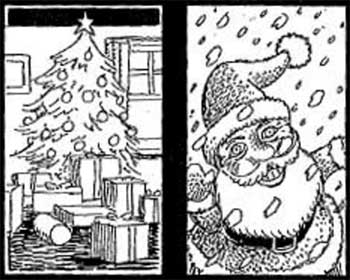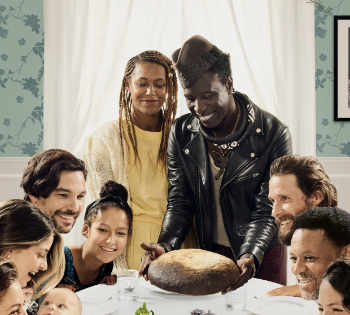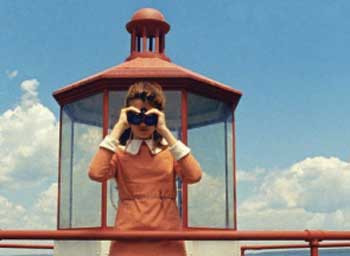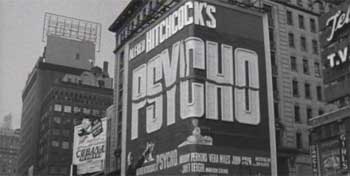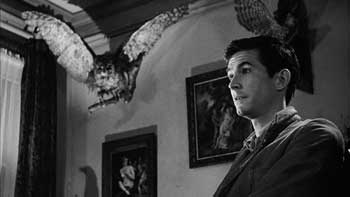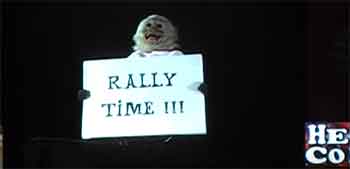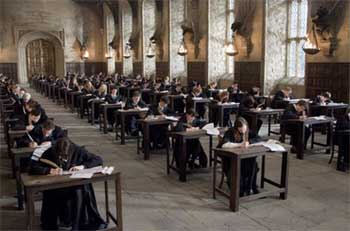Schedule | Fall 2018
Jump to Today | August | September | October | November | December
![]()
August
| WEEK 1 T 8/28 |
Welcome to WRIT 1506!In this course, you will gain a broad historical perspective on the effects of writing and reading on the material, cultural, and political structures of society. In particular, we will learn how fundamentally various forms of literacy have influenced not only our ways of communicating, but our shared senses of reality and identity. For more, see the syllabus (^1) |
Day 1. Introductions, Society |
| R 8/30 | Homework1. Read the Ong HandoutRead the handout "Walter Ong" and underline at least three words or phrases that, for whatever reason, seem interesting to you. 2. Read in Orality and LiteracyFrom Walter Ong's book Orality and Literacy, read
using the principles of Active Reading to mark the pages of your book, leaving a trail of symbols as a record of your "noticings." 3. Annotate the Ong HandoutOn your Ong handout, make at least three annotations (notes in the margins linked to particular phrases, ideas, facts, etc. on the handout) which record ways that the handout helps you understand the book, or the book the handout. Your annotations are notes to yourself and so you need not write complete sentences. Do include a page number from the book in each annotation. Bring your handout to class. Photocopy or Scan/Print and Bring inAfter you've read and marked your text, choose a two-page spread from the book that best shows your active reading and engagement with Ong. Photocopy (or, scan and print) that two-page spread, write your name in the upper right on the paper, and bring it to class to turn in. (1A)~
|
Day 2. Ong C1 and C2Resources
Culture comprises shared ways of thinking, feeling, and acting.
|
September
| WEEK 2 T 9/4 |
HomeworkRead and MarkRead Ong's Chapter 3, "Psychodynamics of Orality" through page 73. Come in prepared to answer the Reading Questions for Chapter 3 Answer the Reading Questions in Writing (and Bring on Paper)Answer each of these questions in writing: a paragraph, a list, a chart, or map, etc. Make your answer "thing-like" (Ong 11), and be sure the "thing" specifically refers to particular pages and passages in Ong's Chapter 3. (2A) If you are interested in alternative formats to conventional writing, here's a sample of one. (~2A) Ong HandoutOn your Ong handout, add three more annotations from Chapter 3. Log Your Classroom ContributionsIn replies to the the Moodle forum "Classroom Contributions," please make note of any quotations from the readings which you orally raised and commented on in class last time. Please log only quotations that you contributed to discussion out loud. Post one message for each quotation using the format of this example: M 3/14: Orwell, The Labyrinthine World of Doublethink This format of each message includes:
|
Day 3. Ong C3
Psychodynamics of Orality A 38-Year-Old Wheat Farmer
|
| R 9/6 | HomeworkRead and MarkRead "Ong Chapter 4 "Writing Restructures Consciousness." Mark and, using the techniques of Active Reading, make marginal notes, especially with the question below in mind. Write, Print, and BringWrite a 500-word "Preparation Sheet" titled "Ong Chapter 4" which answers the following question:
This preparation sheet should
Log Your Classroom ContributionsIn replies to the the Moodle forum "Classroom Contributions," please make note of any quotations from the readings which you orally raised and commented on in class last time. See the full directions on the syllabus.
|
Day 4. Ong C4: Writing Restructures Consciousness
Resources
|
| WEEK 3 T 9/11 |
HomeworkMoodle Posting "The Print Revolution"Set-UpIn the Walter Ong book, we've read about the deep and varied changes, from 800 BC onward, which literacy brought to society, identity, the sense of history, the nature of consciousness, etc. In the handout, "Jay David Bolter: The Cathedral and the Book" (^5b), we see the novelist Victor Hugo imagining how the Catholic church would have experienced the effects of emerging print technologies in the 15th century, and the present-day scholar Jay David Bolter's brief close reading of the scene. Consider these statistics: in the 59 years between 1440 and 1499,
What to Post (by 8 a.m. today)In a reply to the Moodle forum "The Print Revolutioin,"
(~3A) Log Your Classroom 3AontributionsIn replies to the the Moodle forum "Classroom Contributions," please make note of any quotations from the readings which you orally raised and commented on in class last time. See the full directions on the syllabus. Bring your Ong BookPlease bring your Ong book to class again today. |
Day 5. "The Machine That Made Us"
Resources
|
| R 9/13 | Homework DueReadPaul Cobley, Narrative, Chapter 1 "In the Beginning, The End," pages 1-27. Use the principles and techniques of Active Reading to mark your text and record (externalize!) your reading experience. Reading Question: Cobley argues that the power of narratives comes not simply from their content, but from their form: that is, not the story itself, but the telling of the story. This power of narrative telling, Cobley says, is fundamental to human experience and consciousness. This means that the concept of "narrative" much more than just a way of organizing a piece of writing. Choose three specific, key quotations from Cobley's chapter which suggest the source, nature, and/OR consequences of this narrative as a powerful principle in society, culture, and history. Come to class prepared to read and explain your choices. Bring your Ong BookPlease bring your Ong book to class again today. |
Day 6. Narrative and Consciousness:
|
| WEEK 4 T 9/18 |
HomeworkRead in CobleyIn Cobley's Chapter 3, "The Rise and Rise of the Novel," read the following portions: pages 52-62, 68-74, and the last paragraph on 79 Cobley Reading Question:Why is narrative a problem? Cobley argues that the choices you have in telling a story create a "problem of representation" and a potential crisis of truth and authority. Identify three passages (with page numbers) from the chapter that suggest why the telling of a story has such an effect on the story's meaning and consequences. Read, Mark, and Annotate
|
Day 7. Cobley C3,
|
| R 9/20 |
Homework1. Read Cobley Chapter 4Read Cobley, Chapter 4, "Realism" using the techniques of Active Reading. 2. Reading Activities1. Make a ListAccording to Cobley,
Make a list of at least four characteristics with page numbers and bring the list to class. 2. Three Quotations that Challenge the Realist SolutionConventionally, "realistic" representation is assumed to be objective, scientific, and apolitical. This idea presumes to solve the problems of representation. Throughout this chapter, however, Cobley argues otherwise: that realism represents another style of representation, rather than offering unmediated access to reality. Identify at least three of Cobley's reasons, ideas, examples, or arguments (with page numbers) that show how realist narrative is not pure or uncontroversial in its representation of reality or truth. 3. Post In MoodleChoose one of those passages and, in a reply to the Moodle forum, "Cobley C4,"
Write down or printout a copy of your answer and bring it to refer to in class. (~4B) Romanticism HandoutRead over the Romanticism handout (^7) and make at least three annotations on it indicating how "The Legend of Sleepy Hollow" might be Romantic in its ideas, attitudes, and assumptions. Bring IrvingPlease bring to class your copy of "The Legend of Sleepy Hollow" as well as Cobley. |
Day 8. Cobley C4: Realism
Resources
|
| WEEK 5 T 9/25 |
HomeworkBefore Your Read CraneBefore you read the Crane short story, read the handout "Stephen Crane" (^9). Mark at least 3 details or phrases that strike you, for whatever reason. Read and think about the question at the top right, and look at your notes about the characteristics of realism. Annotated Your Crane handoutAs you read the story, make at least 3 annotations on the Crane handout how the story is and isn't realist in its style, assumptions, and philosophy. [Note that "realist" as an adjective indicates something different and much more specific than "realistic."] Bring the handout to class. Bring Characteristics of RealismFor homework last time, you made a list from your reading of Cobley's Chapter 4 of four possible characteristics of Realism. Bring that list to class today and have it handy to refer to. 1. Download, Print, and ReadStephen Crane's "The Blue Hotel" available as a PDF in the course Moodle site. You are required to download, print, and read this story on paper. To save paper and money, note that you can print two text pages per sheet of paper, as well as two sided. 2. ReadRead from Cobley's Chapter 5 (Beyond Realism): pages 106-126 Reading Question (3 Passages):In Chapter 4, Cobley argued--citing Terry Eagleton--the 19th and 20th centuries saw a transformation in the scale of economic life (i.e., "capitalism") through three phases (88). These phases had profound effects on both the form and focus of narratives, and on contemporary models of individualism or identity. In Chapter 5, Cobley is describing the last phase of economic development: the global or "imperialist" stage. Identity and make notes on paper of at least three passages or examples from Chapter 5 that demonstrate the characteristics of this third phase, and how those characteristics resulted in "modernist" narrative style and a "modernist" identity. Bring your notes to class. In a reply to the Moodle forum "Cobley C5" (by 8 a.m.), give the page number, a brief quotation, and two or three sentences of explanation for one of your choices. Bring your post (or at least notes about it) to class on paper. (5A)~ Bring Copy of "Legend..."Also be sure to bring to class your copy of Irving's "Legend of Sleepy Hollow." Log Your Classroom ContributionsIn replies to the the Moodle forum "Classroom Contributions," please make note of any quotations from the readings which you orally raised and commented on in class last time. See the full directions on the syllabus. |
Day 9. Crane, Realism, Modernism
|
| R 9/27 | HomeworkModernist Solar SystemOn a piece of paper, scatter the following nine terms around on the page like plants in a solar system(leaving plenty of room between them):
Connect the TermsIn his Chapter 5 ("Beyond Realism," which you read for last time), Cobley explains how modernist narrative and culture suggest links and relationships between these divergent ideas. In our solar-system analogy, modernism is the sun corralling these ideas together and into a common orbit. On your paper, draw at least five lines between terms that Cobley connects or relates in his discussion of modernism. After reviewing Cobley's Chapter 5, explain each of these lines of connection with a reference to a particular sentence or passage from the chapter. Label each connecting line with a "tag" (composed of 2-5 key words from the passage and a page number with tenths). If helpful, you can include your own notes to explain the connections further Bring the sheet of paper containing your solar system to class. Begin Reading Picture of Dorian GraySince we will spend only one day on the Wilde novel next week, please plan to have the entire (short) book read by next Tuesday. With this in mind, you might want to get a good start on the novel on this relatively light homework day. Bring "Legend...," the Romanticism Handout, and "Blue Hotel"Be sure to bring your copy of "The Legend of Sleepy Hollow," the Romanticism handout, and Crane's "The Blue Hotel." Log Your Classroom ContributionsIn replies to the the Moodle forum "Classroom Contributions," please make note of any quotations from the readings which you orally raised and commented on in class last time. See the full directions on the syllabus.
|
Day 10. Modernism, Romanticism
In Stephen Crane's "The Blue Hotel," observes Walter Sutton, "man is an alien in both nature and society" (73). ["Pity and Fear in 'The Blue Hotel,'" American Quarterly, 1952]
From Our Realism Cluster Last Time
|
October
| WEEK 6 T 10/2 |
Homework1. Bring Your Cobley Book to Class
|
Day 11. The Picture of Dorian Gray
Resources
|
| R 10/4 | Homework1. Read in Dracula
2. Bring your Copy of The Picture of Dorian Gray
|
Day 12. Dracula:
|
| WEEK 7 T 10/9 |
HomeworkReadRead Dracula, pages 97 - 328 (Chapters 6- 21) Page Numbers and NotesAs you read, take down brief notes to yourself of topics and page numbers for passages that speak to how and why this book is "persistently...anxious" about developments in literacy, technology, and society (affecting identity, consciousness, and the sense of history). Come to class with at least 7 briefly noted topics/page numbers from the chapters read for today. Bring to ClassBring to class Wilde's The Picture of Dorian Gray, Irving's "The Legend of Sleepy Hollow" Be sure to have your handouts regarding Irving, Wilde, Stoker, Romanticism, and the Gothic Genre. |
Day 13. Dracula:
|
| R 10/11 | HomeworkReadRead to the end of Dracula, pages 329 - 419 (Chapters 22- 27) Notes on the Gothic HandoutOn the handout "Notes on the Gothic Genre," make at least 6 annotations (with page numbers for details and examples from Dracula) that illustrate the Gothic characteristics of Stoker's novel. ~(7B) Bring to ClassBring to class Wilde's The Picture of Dorian Gray, Irving's "The Legend of Sleepy Hollow" Be sure to have your handouts regarding Irving, Wilde, Stoker, Romanticism, and the Gothic Genre. Log Your Classroom ContributionsIn replies to the the Moodle forum "Classroom Contributions," please make note of any quotations from the readings which you orally raised and commented on in class last time. See the full directions on the syllabus.
|
Day 14. Dracula:
|
| WEEK 8 T 10/17 |
HomeworkReadRead 1984, pages 1 - 224 (56 pages a day) Make a List with Page Numbers-- What are some ways that the party controls society in 1984? To begin answering this question, come into class with a list of at least 5 ways with at least 8 page numbers that point to instances (meaning that you may have multiple instances of any one way the party controls society) Remember to Log Your Classroom ContributionsIn replies to the the Moodle forum "Classroom Contributions," please make note of any quotations from the readings which you orally raised and commented on in class last time. See the full directions on the syllabus. |
Day 15. 1984 1
|
| R 10/19 | HomeworkReadRead 1984, page 225 - 298 (37 pages a day) Bring Your Cobley Book
Six Quotation Tags on Your HandoutAs you read this section of 1984, have your Modernism handout at your side. Print it out if you don't have it on paper. 1. Look over the quotations, characteristics, causes, and conditions our Modernism handout. 2. Consider these three questions:
3. As you read, note down the location of at least six quotations from 1984 which suggest answers to these questions. 4. In the margin of the handout, write quotation tags (a few key words and the page number with tenths) for each passage from 1984, and then draw a line to connect the tag with the point about modernism. 5. Bring the handout to class. (8A)~ Log Your Classroom ContributionsIn replies to the the Moodle forum "Classroom Contributions," please make note of any quotations from the readings which you orally raised and commented on in class last time. See the full directions on the syllabus. Bring to ClassBring to class Wilde's The Picture of Dorian Gray, Irving's "The Legend of Sleepy Hollow" Be sure to have your handouts regarding Irving, Wilde, Stoker, Romanticism, and the Gothic Genre.
|
Day 16. 1984 2
Resources
"Satire": the use of humor, irony, exaggeration, or ridicule to expose and criticize |
| WEEK 9 T 10/23 |
Homework1. Print, Read MarxPrint, number the paragraphs, and read Karl Marx's "Preface" to A Contribution to the Critique of Political Economy (starting with the fourth paragraph, which begins "Although I studied jurisprudence,....") Before you read, see 2. below Please number the paragraphs on your printout to help us locate passages in class together. 2. Annotate the "Base and Superstructure" Handout with Quotation TagsAs you read the Marx piece, select and arrange six or seven key quotations from the reading (each represented by a "quotation tag" composed of the paragraph number and a few keys words) on the Base and Superstructure diagram. With your placement of these quotation tags on the diagram, you're indicating which quotations show Marx talking about:
For example, you would place a quotation about the "means of production" in the base, or a quotation about education in the superstructure. (You might need write your paragraph numbers and key words arround the edges and use arrows to show where they go in the diagram) Bring your handout to class prepared to turn it in at the end of the meeting. (9A)~ 3. Exam Preparation: Bring Two Copies of a Cluster on One Memorable Thing1. Do a cluster of at least ten items from our semester's readings and discussions. (See these directions on clustering.) This cluster should have as its central starting point one "memorable thing" as represented by a word or phrase from our readings: a particular object, example, critical term, distinction, definition, symbol, person, etc. from a single text from our class. Think of this memorable thing as your handle on the course--your touchstone or lynchpin. In that cluster, then try to associatively conntect to that central starting point as many items as you can from the entire semester. These conntected items can be titles, examples, abstract ideas or dichotomies, characters, scenes, phrases, distinctions, passages, key terms, etc. Examples of the cluster's central object, example, etc. could be
All items should include have page numbers. (9B)~ Bring to ClassBring to class all books, handouts, and notes from the first half of the course. Page Numbers on Your HandoutsNumber your handouts so they will be easy to organize and so we'll have a common numbering system. To find the handout numbers, do a search on this web page for the caret symbol (^), which I've used to tag and number each handout chronologically. |
Day 18. Marx/Midterm Preparation
Resources
Marxist Theorists and Scholars in Cobley
|
| R 10/25 | Fall Break:
|
|
| WEEK 10 M 10/29 |
Midterm Exam (Out of Class Portion)Take-Home Portion of the Midterm
|
|
| T 10/30 | Come Prepared for ExamCome to class prepared to take the In-Class Portion of the Exam (composed of the Matching and Fill-in-the-Blank formats). Bring two pens that you trust. There is no need to bring books or notes. |
Day 19. Midterm (In Class Portion)
|
| |
HomeworkRead Cobley Chapter 7: PostmodernismRead Cobley pages 155-181 Print, Read Hayden White Excerpts1. From the Cobley book, look up Hayden White in the index and then read the pages analyzing how White fits into Cobley's survey of narrative theory. 2. From Moodle, download, print, read, mark and bring to class
See the Moodle site for links to these PDFs. 3. Make a list of what characterizes postmodernism, and then think about how Hayden White's approach to the writing of history is postmodern in its ideas and assumptions. Bring your list and notes on White to class on paper. (~10) |
Day 20. Postmodernism and History
Resources
|
| WEEK 11 T 11/6 |
HomeworkRead Bridget Jones' DiaryPages 1 -177 Postmodern Satire1984 and Bridget Jones' DiaryStrangely enough, both 1984 and Bridget Jones' Diary are satires. They were both also chosen by readers of the prestigeous British newspaper The Guardian as two of the 10 Books That Defined the Twenieth Century. If 1984 (published in 1949) is modernist in both the world it represents and the ways it represents it, could we say that Bridget Jones' Diary (published in 1996) is postmodern in subject and style? In what ways are postmodern ideas, attitudes, and assumptions expressed in Fieldings's development of characters and her humor? Notes on Your Handout:Add at least 8 tags to your Postmodernity handout from or about Bridget Jones' Diary. These items can be either of the following: 1. Particular LinesMake notes in the margins of your Postmodernity handout (or print out a new one if you need more room), connecting particular lines or details from BJD to specific items on the handout (both in the "Charactersitcs" column and the "Causes and Conditions" column). 2. General Themes and FormsAlso try stepping back: are there general aspects of the book that you can associate with postmodernism? For instance, the diary format, the voice, the language, ongoing themes, plot lines, etc. On your handout, connect these general observations to particular ideas about postmodernism, and then try to find a particular instance that you can point to on a particular page. Log Your Classroom ContributionsIn replies to the the Moodle forum "Classroom Contributions," please make note of any quotations from the readings which you orally raised and commented on in class last time. See the full directions on the syllabus. Re-Read Ong about DiariesRe-Read what Walter Ong has to say about diaries on pages 100-101. -- What does it make you think about in regard to Bridget Jones' Diary? Bring your Ong book to class. |
Day 21. Bridget Jones Diary, Postmodernism
Resources
"Simplifying in the extreme...I define postmodern as incredulity toward metanarratives" (Jean-Francois Lyotard qtd. in Cobley 169). |
| R 11/8 | HomeworkFinish Reading Bridget Jones' DiaryPages 179-271 1984 and Bridget Jones' Diary1. The Set-UpReaders of the prestigeous British newspaper The Guardian chose 1984 and Bridget Jones' Diary as two of the 10 Books That Defined the Twenieth Century. The two novels, however, come from very different ends of the century: Orwell's from the 1940s and Fielding's from the '90s. Comparing and contrasting the two novels distinguishes two very different modes of "society" (one of our course's key words): modes we might call
2. A Three-Column ComparisonOpen the Word file "Three-Column Comparison." In the middle column, fill in vertically at least eight terms that could be used to compare 1984 and Bridget Jones Diary. Here, for instance, are 17 you might choose from:
In the left column labeled, "1984," write a few words that characterize Orwell's representation of that theme or type in 1984. You might list an example or two from the novel as well. In the right column labeled, "Bridget Jones' Diary," do the same: type in examples and characterizations of how that theme or type is represented by Fielding. 11A~ 3. Rank Your Top 3 and Have Page NumbersWhich points of comparison best illustrate the differences between modernist and postmodernist modes of society? of consciousness? Rank your top three and be ready to discuss why. What passages from Bridget Jones Diary best illustrate the postmodern, '90s side of your top three differences? Have page numbers for each of the three |
Day 22. Bridget Jones' Diary 2
Resources
|
| WEEK 12 T 11/13 |
Homework1. Reading GuideRead the Satrapi handout thoroughly. Circle key terms and phrases. Write at least 3 annotations (brief notes to yourself) in the margins of the handout capturing any of the following thoughts:
Re-read and think about the set of questions on the handout. 2. Read PersepolisPlease complete reading the entire graphic novel. 3. Answer One Question in a Paragraph on PaperAfter reading the novel, respond to one of the questions on the handout in a long, subtantive paragraph. Cite particular pages and details at least twice (with page numbers in parentheses). Bring the paragaph on paper to class and be ready to discuss your answer. (~12A) |
Day 23. Persepolis
Resources
|
| R 11/15 | HomeworkBringBring both your Persepolis book and your McCloud printouts to class (and be ready to show them for full credit). Print and ReadFrom the Moodle site, download, print, and read (on paper) Chapters 3 and 4 from Scott McCloud's book Understanding Comics. You can print the chapters with 2 pages per sheet of paper and double-sided to save on costs. Bring your printouts to class and be ready to show them. Moodle Post: The Uses of Visual Literacy (McCloud and Satrapi)On the Moodle site, you will find two forums:
By 8 a.m. today, please reply to both these forums. In each of your replies, post a screen shot from both McCloud and Satrapi which together illustrate how McCloud's technique serves a writer's (like Satrapi's) purpose. Note that you can easily find digital copies of images from Persepolis by Googling the title and page number (e.g., "Persepolis page 4") and clicking "Images" from the menu at the top of the screen. In the text field of each of your posts, 1. explain in a sentence or two how your illustration helps us understand the possibilities of McCloud's technique and how it works, and 2. in another sentence or two, describe how Satrapi uses the McCloudian technique(s) to create and heighten the effects and meanings of her story. Print out the Moodle posts--try copying and pasting the images and text into a Word file to print--and bring the printouts to class. 12B~ Reminder about How to Paste Images in a Moodle PostAfter you click "Reply" to my message at the of the forum, scroll down to the "Message" window under the "Your Reply" heading. Copy and paste images into the message window and type your text beneath. On a Mac, for instance, you can select and copy a portion of your screen by clicking Command+Conrol+Shift+4 and then dragging the cursor diagonally to select and copy a portion of your screen to the computer's clipboard In Moodle, paste the image from the clipboard into the message window. Log Your Classroom ContributionsIn replies to the the Moodle forum "Classroom Contributions," please make note of any quotations from the readings which you orally raised and commented on in class last time. See the full directions on the syllabus. |
Day 24. McCloud's Understanding Comics
ResourcesMcCloud
Satrapi
German Expressionism
''For a long time, I went to bed early.'' |
| WEEK 13 T 11/20 |
Extra CreditGerman Expressionism and Popular Visual LiteracyDownload the online verson of the handout "German Expressionism, Modernism, and Tom Wait's "Hell Broke Luce" (2011) (^20). Save it under a different file name. Find online copies of panels from Persepolis. Copy and paste screen shots of these individual panels into the handout file to replace the still images from the Tom Wait's video. Choose each of these panels to illustrate one of the characteristics of Modernism (and one of its varieties, German Expressionism). In the upper left of the handout file, replace my name with yours and change the title to "German Expressionism, Modernism, and Perspolis" Print the document and bring it to class next time to submit for extra credit. Happy Thanksgiving! ~ExCr1 |
No Class Meeting
|
| R 11/22 | Thanksgiving
|
|
| WEEK 14 T 11/27 |
HomeworkReadRead Cobley's Chapter 6, "Modernism and Cinema," pages 132 - 154. Before you do, though, be sure to see the directions below: Cluster for Answers and Patterns Defining Modernism and Connecting it to the Medium of FilmAs you read the Cobley chapter, look for at least 8 passages or phrases that help you answer the questions below. Compose "quotation tags" (1-5 words and a page number with tenths) for those passages on a sheet of paper in the form of a cluster. Read carefully my directions for clustering. Be sure to follow each step, especially the final one. Choose quotations that speak to the questions below, but also use the clustering technique to look for patterns and relationships that you might not otherwise notice or think about. Questions to Be Thinking About Making Your Cluster1. According to Cobley, what are the features of modernist narrative (for instance, how does it differ from realist or Romantic narrative)? 2. What are the features of a modernist self or identity, according to Cobley? 3. In what ways does Cobley say that cinematic narrative differs from print narrative? What are some of cinematic narrative's features and techniques? 4. According to Cobley, what are some ways that cinema naturally expresses modernist ideas and attitudes? (~14A) Consider Adding Tags from Cobley's Chapter 5Cobley's Chapter 5, "Beyond Realism" is also about Modernism. Consider adding to your cluster several tags of passages you marked in Chapter 5 as important or interesting to give you a fuller picture of Modernism. Be sure to include page numbers. Bring Your Storyboard PiecesLast time in class, you sketched some ideas for shot on pieces of paper (a page divided into eights). Please bring these pieces of a storyboard of your morning back to class today (if you still have them)
|
Day 25. Modernist Narrative in Film
Resources
"These [Chekhov] stories are inconclusive, we say, and proceed to frame a criticism based upon the assumption that stories ought to conclude in a way that we recognize,” Virginia Woolf would later write about Anton Chekhov. “In so doing we raise the question of our own fitness as readers. Where the tune is familiar and the end emphatic—lovers united, villains discomfited, intrigues exposed—as it is in most Victorian fiction, we can scarcely go wrong. But where the tune is unfamiliar . . . as it is in Chekhov, we need a very daring and alert sense of literature to make us hear the tune, and in particular those last notes which complete the harmony.
|
| R 11/29 | HomeworkReadRead the handout: The Tragic Wit of Psycho (Donald Spoto) Choose a ThemeChoose a particular theme or effect described by Spoto to look for as you watch the film. Five Pages Prepared for Taking NotesCome in with five sheets of paper divided into four columns for taking notes on the four parameters of film: Cinematography, Editing, Mise en Scene, Sound. You can create these five sheets by hand or feel free to print out copies of the Word file, "Film Notes Format: Four Formal Parameters." Be prepared especially to take notes on the narrative of the film (as opposed to the story or plot), paying particular attention to how the film's technique serves a meaning and effect that Spoto talks about (and the meaning and effect of the film generally). Essentially, we want to pay attention to how technique (narrative) is deployed not for its own sake, but for larger social, cultural, political, aesthetic purposes. Theme or Idea about Hitchcock or Psycho from the MLA BibliographyFor today, find one additional theme or effect to look for in Psycho which is drawn from a critical source besides Spoto's "Tragic Wit" passage. In class, I will ask you to turn in one or two printed pages that show your final products from the following steps.
(~14B, This exercise will count triple the usual, daily homework credit) Moodle PostAs a reply to the Moodle forum "Psycho Themes/Ideas Beyond Spoto's," write and post a one- or two-sentence description of the theme or idea you found and researched, and why you found it interesting or potentially useful in watching and thinking about the film. Below your description, include all the publication information you recorded in your handwritten notes. (~14C) Log Your Classroom ContributionsIn replies to the the Moodle forum "Classroom Contributions," please make note of any quotations from the readings which you orally raised and commented on in class last time. See the full directions on the syllabus. |
Day 26. Psycho 1
Resources
Film
IdentificationCinematophy, Editing, Mise-en-scene, and Sound are the techniquies of narrative in film, which are used together to create and direct the audience's sense of identification with someone or something on the screen. "Psycho" |
| WEEK 15 T 12/4 |
Homework1. Post to Moodle in "Psycho Themes"In a reply to the forum "Close Reading a Pairing of Themes in Psycho," write a long paragraph that does the following: 1. Start Your Paragraph with a QuotationBegin by quoting Spoto about one theme or idea that he observes in Psycho from the handout "The Tragic Wit of Psycho." Some of the themes or ideas Spoto mentions include
2. Complete Your ParagraphThen do the following in your paragraph: A. describe a scene, shot, or sequence in the film that illustrates Hitchcock's introduction or handling of that theme or idea, B. analyze how Hitchcock employs one of more of the narrative "parameters of film" to develop this theme or idea in your chosen scene or shot (cinematography, editing, mise-en-scene, sound), B. Then, explain how that same scene or shot suggests a relationship or association between your chosen theme or idea and another one that Spoto mentions, or perhaps one that found in the MLA Bibliography homework or that you've observed. (For example, how a particular scene relates together pairs of themes like:
3. Optional Image or Screen Shot from PsychoIf you are able to find an image online from that scene (or take a screen shot from an online clip form the film) to illustrate your paragraph, feel free to insert it into your post. To insert the image file of your screen shot into your Moodle post. 15A~ 2. Five Pages Prepared for Taking NotesCome in with five sheets of paper divided into four columns for taking notes on the four parameters of film: Cinematography, Editing, Mise en Scene, Sound. See the handout Film Notes Format: Four Formal Parameters. |
Day 27. Psycho 2
|
Homework1. Exam Preparation: Bring Two Copies of a Cluster on One Memorable ThingA. Do a cluster of at least ten items from the second half of this semester's readings and discussions. (See these directions on clustering.) This cluster should have as its central starting point one "memorable thing" as represented by a word or phrase from our readings: a particular object, example, critical term, distinction, definition, symbol, person, etc. from a single text from our class. Think of this memorable thing as your handle on the course--your touchstone or lynchpin. In that cluster, then try to associatively connect to that central starting point as many items as you can from the entire semester. These connected items can be titles, examples, abstract ideas or dichotomies, characters, scenes, phrases, distinctions, passages, key terms, etc. B. Look over the cluster you created before the Midterm Exam (or other notes), and add to your new cluster at least five items that you can use to connect specifics from the first half to particulars from the second half. 15B~ 2. Bring to ClassBring to class all books, handouts, and notes from the second half of the course. 3. Two-Page StoryboardTo cap off our activities concerning visual literacies, use sketches you drew in class of your "morning" on 1/8-page-sized slips of paper to compose a storyboard. This storyboard should be a plan for the first eight shots in
I will ask you to turn in two sheets of paper with selected shots taped or glued into a final sequence. SampleSee this sample page of the storyboard you will create with the steps below. (Just for fun, here's a sample of Hitchcock's storyboard for the film Family Plot.) StepsA. Orient a blank sheet of paper in a landscape direction (rather than portrait), and write the following across the top:
B. On your desk or table, lay out the slips with your shots on them. With the title, mood, music, and genre in mind, organize and sequence the shots. Create new shots on additional slips of paper as desired. C. On the sheet of paper, tape or glue the first four shots in order (left to right, top to bottom) leaving space between them for notes. D. Number the shots to show the order. E. Between the first and second shots, draw an arrow and next to the arrow write the name of the kind of transition or closure using McCloud's vocabulary from Chapter 3. Then do the same for the transition between shots 3 and 4. F. Write notes next to these transitions briefly describing how you intend your shots and transitions to achieve the mood and meanings you intend. G. On a second sheet of paper, do the same for shots 5-8. You don't need to repeat the title, etc., but do put your name. H. Staple both pages together and bring to class to turn in for credit. ~15C |
Day 28. Distributed Postmodern Literacies, Augmented Space, and Exam ReviewResources
|
|
| WEEK 16 FINALS WEEK Tuesday 12/11 8 a.m. |
Online Final Exam
|
.
|
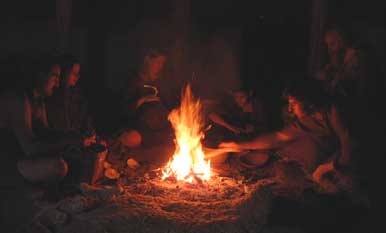
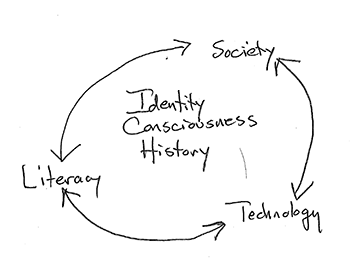


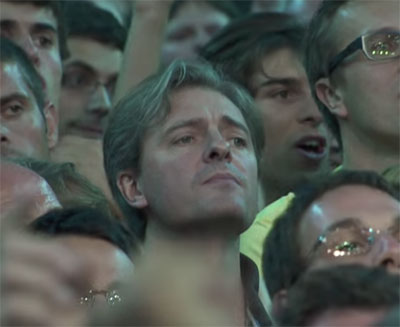
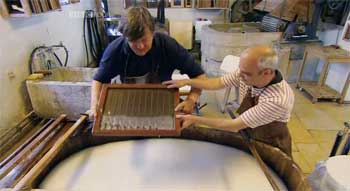

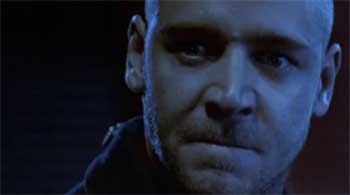
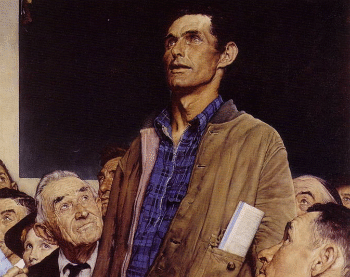


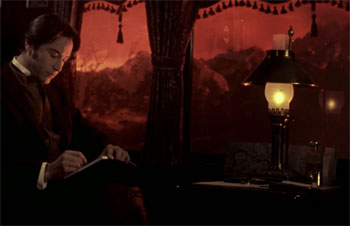
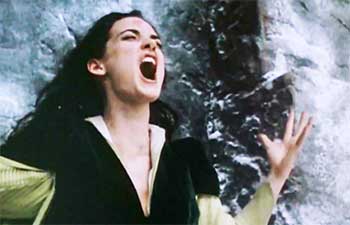
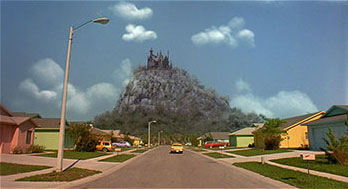
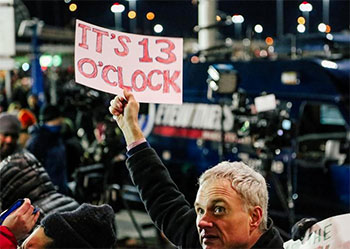
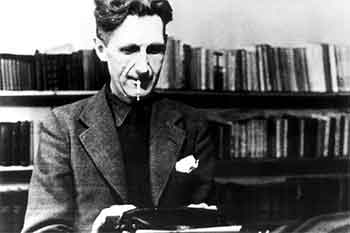
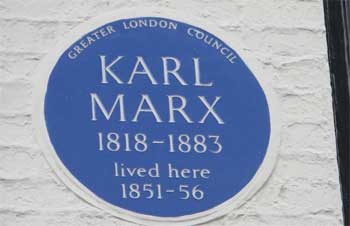
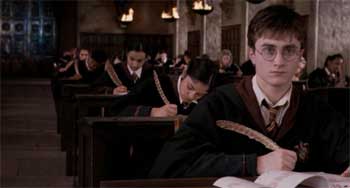


 H
H
